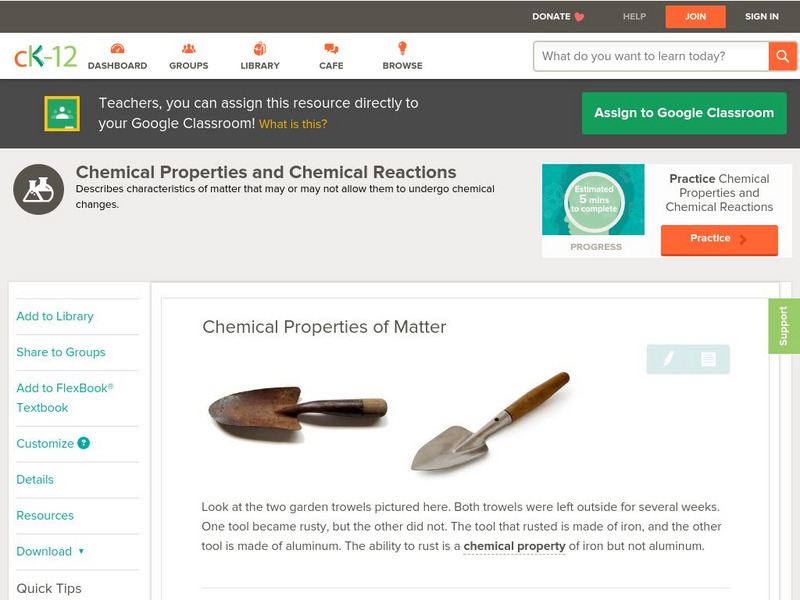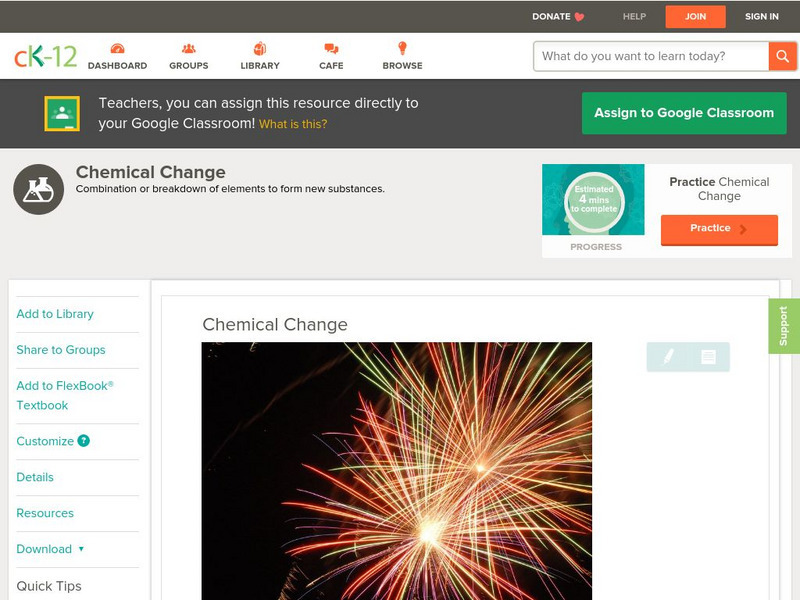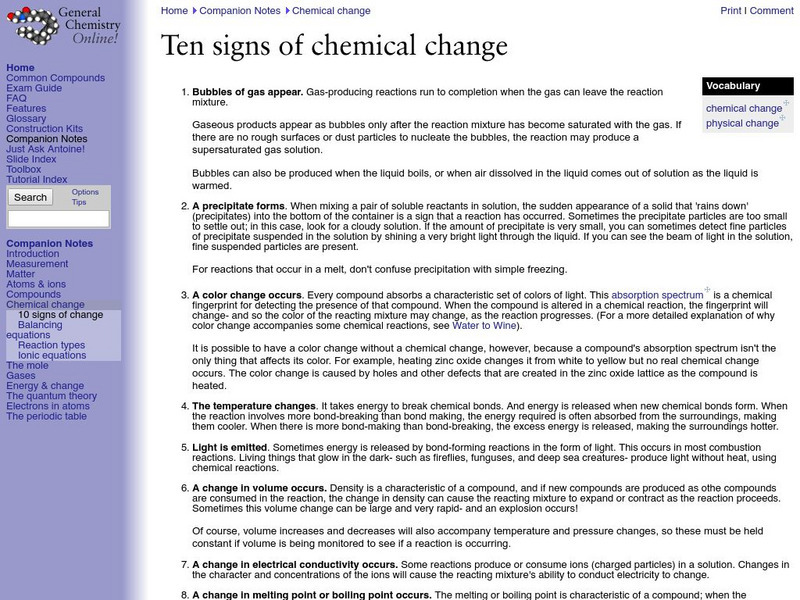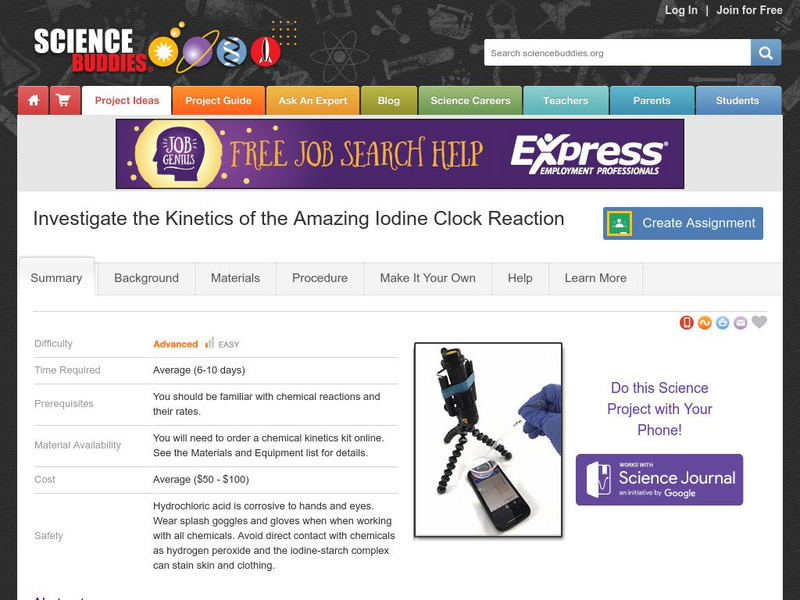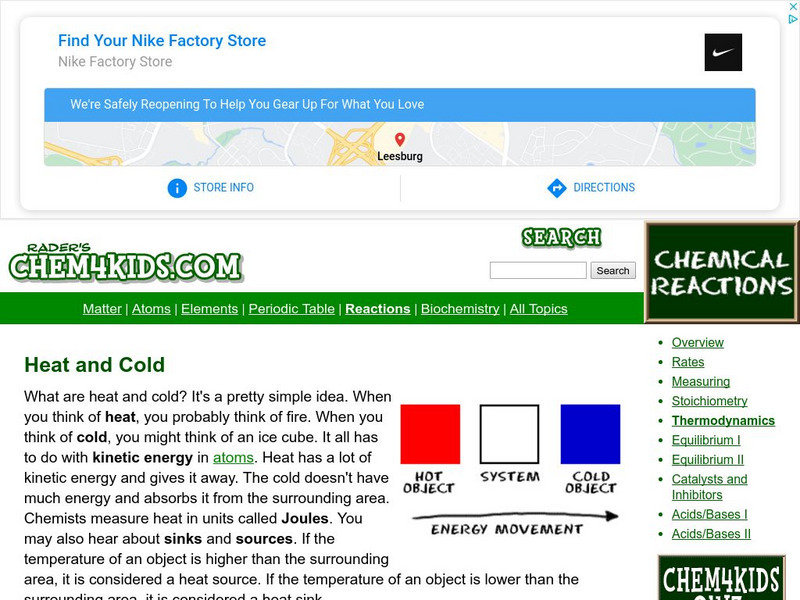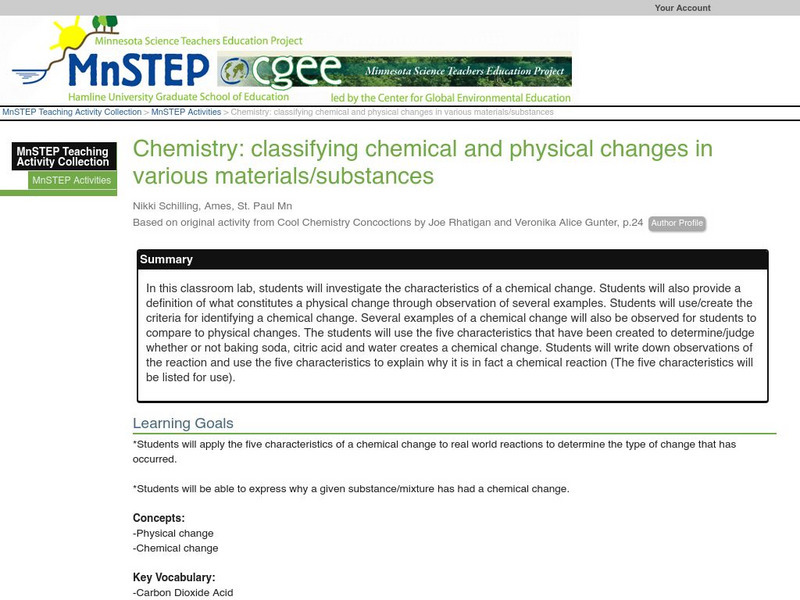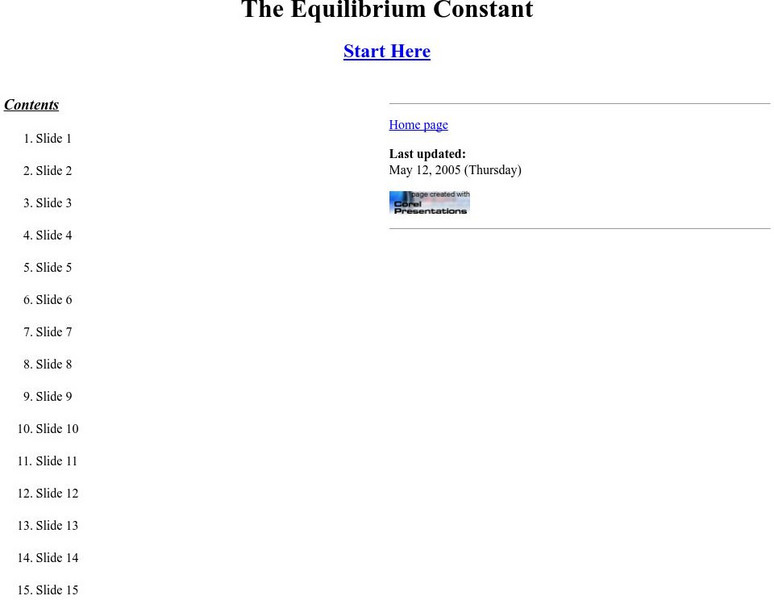Hi, what do you want to do?
Science Education Resource Center at Carleton College
Serc: Chemical Changes: Reacting an Acid and Base
In this chemistry lab, students will investigate chemical changes that occur when acids and bases react. It is meant to introduce the concepts of chemical changes, gases have mass, conservation of mass, and balancing equations. Students...
American Chemical Society
Middle School Chemistry: Lesson Plans: Forming a Precipitate
Students investigate the concept of a precipitate by combining two clear, colorless solutions that produce a solid.
CK-12 Foundation
Ck 12: Mole Ratios
[Free Registration/Login may be required to access all resource tools.] In this learning module, students will learn how to calculate and account for the amounts of reactants and products in a given chemical reaction.
Crescent Public Schools
The Internet Science Room: Balancing Chemical Equations
Students learn the basics of writing and balancing the chemical equations of chemical reactions.
CK-12 Foundation
Ck 12: Physical Science: Chemical Properties of Matter
[Free Registration/Login may be required to access all resource tools.] Definition of chemical property and examples of the chemical properties of matter.
CK-12 Foundation
Ck 12: Physical Science: Chemical Change
[Free Registration/Login may be required to access all resource tools.] Definition of chemical change and examples, signs of chemical change and how it can be reversed.
American Geosciences Institute
American Geosciences Institute: Earth Science Week: Chemistry of Burning
In this activity, students use pipe cleaners and foam balls to build a model of a hydrocarbon molecule. They then modify it to demonstrate the chemical reaction that happens when the hydrocarbon is burned.
CK-12 Foundation
Ck 12: Mole Ratios
[Free Registration/Login may be required to access all resource tools.] In this online tutorial students will relate balanced chemical equations to everyday analogies, such as a recipe. They will also define stoichiometry and use mole...
Frostburg State University
General Chemistry Online: Ten Signs of Chemical Change
Resource provides the ten signs that tell when a chemical change has occured. Each sign has a detailed explanation.
Khan Academy
Khan Academy: Biology: Chemistry of Life: Chemical Bonds
Review over covalent, hydrogen, and ionic bonding in this article. Learn how molecules are held together by chemical bonds.
Science Buddies
Science Buddies: Investigate the Kinetics of the Amazing Iodine Clock Reaction
In this science fair project, investigate the chemical kinetics of the famous iodine clock reaction. This classic experiment requires about a week to complete.
CK-12 Foundation
Ck 12: Rate Laws
[Free Registration/Login may be required to access all resource tools.] Students use a rate law to describe the concentration dependence of a reaction rate, and then determine the rate law for a reaction by analysis of experimental data....
Chem4kids
Chem4 Kids: Thermochemistry
This site provides a general overview of thermochemistry, the division of chemistry that deals with temperature in chemical reactions. Content explores what heat and cold really are, the heat and energy around you, and a bit about Lord...
Science Education Resource Center at Carleton College
Serc: Classifying Chemical and Physical Changes in Various Materials/substances
In this classroom lab, students will investigate the characteristics of a chemical change. Students will also provide a definition of what constitutes a physical change through observation of several examples. Students will use/create...
Open Curriculum
Open Curriculum: Introduction to Balancing Redox Reactions
The objective of this article is to introduce how to balance redox reaction chemical equations in neutral solution.
Chiral Publishing
Chiral Publishing: An Introduction to Chemistry: Equilibrium Pressure of Reactants and Products
Learn about the equilibrium pressures of chemical reactions. Follow the general steps used in calculating the pressures, and see some examples. Also find links to tutorials, presentation, and animations about other chemistry topics.
Davidson College
Davidson College: Chemical Equilibria: Equilibrium Constant
Explains what the equilibrium constant is and presents a virtual experiment where its value must be determined in two chemical reactions. Requires Java.
Davidson College
Davidson College: Chemical Equilibria: Uncertainty in Equilibrium Calculations
Discusses and explores the impact of random pressure errors on the equilibrium constant in a chemical reaction. Requires Java.
Chiral Publishing
Chiral Publishing: An Introduction to Chemistry: Real World Applications of Equation Stoichiometry
This audio book, narrated by author Mark Bishop, describes how equation stoichiometry can be used in the real world. Many examples are given to help understand how to plan chemical reactions, solve for limiting reactants, and calculate...
Alabama Learning Exchange
Alex: The Evidence of Chemistry
The students will learn to identify evidence that a chemical reaction has taken place. They will use the Internet to research evidence and find examples. They will look around their school and neighborhood for examples. They will perform...
Maryland Science Center
Maryland Science Center: Caramel Chemistry [Pdf]
This activity demonstrates the Maillard Reaction, which explains how browning and flavor develop when something is cooked.
Khan Academy
Khan Academy: Double Replacement Reactions
Definition and examples of double replacement reactions. Predicting and balancing neutralization and precipitation reactions.
Other
Mountain Empire Community College: Biology and Chemistry: Acids and Bases
Learn how acids and bases are defined. Also read about examples of each and their chemical reactions.
Upper Canada District School Board
Tom Stretton's Chemistry Pages: The Equilibrium Constant
This illustrated slideshow presents the chemistry concept equilibrium constant in a chemical reaction.








